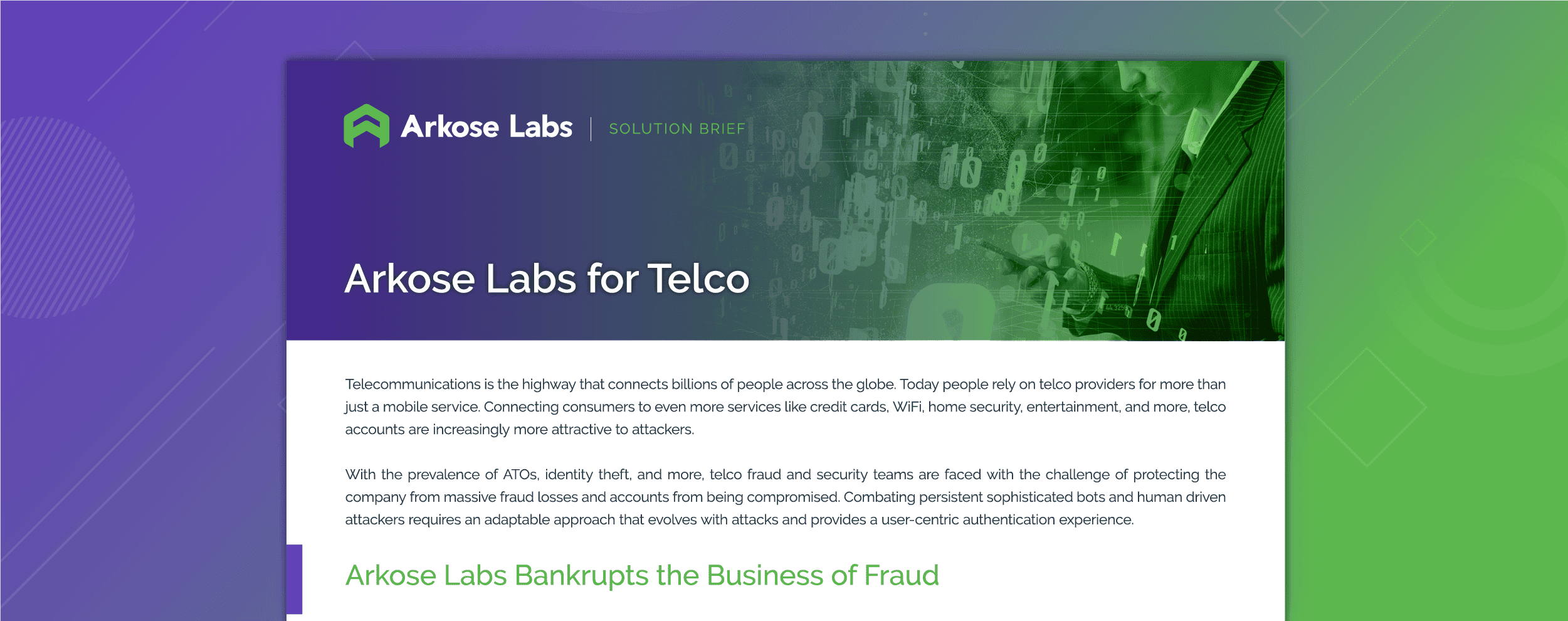This type of telecommunications fraud (or telco / telecom fraud) is a serious issue that telcos must be aware of and take steps to prevent. Fraudulent activity costs the telco industry billions of dollars each year, but with the right strategies in place, telcos can reduce their vulnerability to fraud and protect their customers' data. There are many different types of telecom fraud out there, which means businesses like communication service providers (CSP), that transport information electronically through telephony and data services, and Internet service providers (ISPs) need to understand best practices around detection and prevention.
With this knowledge, telcos can make sure their networks are secure and their customers are protected from fraudsters. In fact, telecommunications fraud is becoming more common and causing major financial losses, with an estimated USD 1.8 Trillion in revenue losses and fraud expenses alone predicted to reach $39.89 Billion in 2021, which is 2.22% of total revenues. 1
Ready to learn more about the next generation of telecom security?
How does telecom fraud work?
Telephony networks are the oldest, most expansive in the world, and fraudsters have been exploiting them for years to make money. Indeed, revenues in 2023 are estimated to exceed $498 billion, and the sector is expected to grow at a rate of 2.08% annually. Despite companies' attempts to combat fraud, telco fraud is still prevalent as operators are reluctant to implement complex risk management systems into their existing architecture.
Billions of people around the world rely on telephony networks, making them lucrative targets for fraudsters. As technology advances, so do the techniques used by criminals to exploit the weaknesses of these networks. Fraudulent activities on telephony networks range from illegal calls to text message scams, as well as identity theft and phone porting. With the rise of internet-based communication, there has been an increase in VoIP fraud, where criminals use devices to access networks and make unauthorized calls.
To protect themselves, telco service providers are implementing a wide range of fraud prevention measures, such as fraud detection systems, authentication processes, and data monitoring. However, due to the complexity of such systems, telcos are often reluctant to invest in them, leaving them vulnerable to fraudsters. As the telephony sector continues to grow, it is essential that companies take action to combat fraud and protect themselves and their customers.
Types of Telecom / Telco Fraud
In the past, telecommunications companies were not quick to establish risk operations departments, leading to them either taking the losses or passing them onto the repo business. However, telecom operators are now more likely to address their fraud issues directly. These are just a few of the the attack models they are dealing with:
International Revenue Sharing Fraud (IRSF) is a form of financial crime that involves the transfer of funds from a company’s bank account without their authorization. The fraud is usually perpetrated by a malicious actor who gains access to the company’s account using stolen credentials or other means. The funds are then transferred to an offshore account, usually located in a country with a history of lax financial regulation. The fraudsters often attempt to disguise the transaction as a legitimate international transaction, making it difficult to track.
The impact of IRSF fraud on a company can be substantial. Not only does the company lose the funds that were transferred, but there are also additional costs associated with investigating the fraud and taking action to prevent future incidents. In addition, the company may suffer reputational damage, as their customers may be concerned about their security practices. Companies must be vigilant in protecting their accounts from IRSF fraud and proactively monitor for suspicious activity.
Account Takeover Fraud is a type of cybercrime where malicious actors gain unauthorized access to a user’s account or accounts. This type of fraud is particularly common in the telecom space, with malicious actors taking control of the business’s telecom accounts to make large purchases on their behalf. This type of fraud can be difficult to detect, as the malicious actors often use stolen login credentials or account information to gain access. Telecom companies are particularly vulnerable to account takeover fraud, as many businesses use large numbers of telecom accounts to manage their communications.
Businesses can be targeted by attackers who use stolen credentials to access their accounts and make fraudulent purchases, such as large orders of new phones or accessories. Companies should take steps to protect their accounts, such as implementing two-factor authentication and regularly reviewing account activity to detect any suspicious activity. Telecom companies should also be aware of the potential for account takeover fraud and be prepared to take swift action if any suspicious activity is detected.
SMS (Traffic) Pumping is a technique used by businesses to drive traffic to their websites. It works by sending out large volumes of text messages to potential customers. The message contains a link to the website, and when the recipient clicks on the link, they are taken to the site, thus increasing the website’s traffic. This strategy is often used by companies that have a limited budget for advertising or companies that are looking to increase their visibility in a short period of time.
SMS Pumping is a great way to quickly reach out to potential customers and promote a company’s website. It is also very cost-effective, as it does not require a large budget for advertising and can be done quickly. Furthermore, it is a way to target specific audiences, as the messages are tailored to the recipient’s interests. But it is important to ensure that the messages are sent in a professional manner—and that the recipient is aware of the company’s intentions. If done incorrectly, SMS Pumping can be seen as a form of spam and can negatively affect a company’s reputation.
Credit Card Fraud (or Deposit Fraud) in the telecom space is a growing problem, but one that can be managed with the right security measures. Fraudsters can use stolen credit cards to purchase services from telecom providers, leaving the telecom company on the hook for the cost of the service. To protect against this, telecom companies should implement a robust authentication system for all credit card transactions. This system should include verifying the customer’s identity, confirming the validity of the credit card details, and inspecting the transaction for signs of fraud.
Deposit fraud is when a fraudster deposits money into a customer’s account and uses the funds to purchase services from the telecom company. To prevent this type of fraud, telecom companies should ensure that customers are required to provide proof of identity when making a deposit. This could be in the form of a driver’s license or passport. Additionally, telecom companies should verify the source of the funds and ensure that the deposit is coming from a legitimate source.
Subscription Fraud is a major concern in the telecom space, as it involves the unauthorized use of services and products. This type of fraud can involve someone using a stolen or fake identity to purchase services or products, or using a stolen credit card to make fraudulent purchases. The fraudster may also use a legitimate user’s account to sign up for services without their knowledge. Subscription fraud can have a major impact on a telecom provider, as it can lead to lost revenues, lost customers, and other financial losses.
In order to prevent subscription fraud in the telecom space, telecom providers must take a proactive approach. This includes implementing robust authentication processes to verify the identity of users, monitoring accounts for suspicious activity, and maintaining high levels of security when it comes to user data. Additionally, telecom providers should work with fraud prevention services to detect and prevent fraudulent activities from occurring.
SMS Phishing (or Smishing) is a type of cyberattack that uses malicious text messages to acquire sensitive information from businesses. Smishing attacks target company employees, customers, and other stakeholders in order to gain access to passwords, financial information, and other confidential data. These attacks can be difficult to detect, as they often appear to be sent from legitimate sources.
In the telecom space, smishing attacks can be particularly damaging. Such attacks can be used to target mobile devices in order to gain access to account information and other sensitive data. In some cases, attackers may even be able to send fake text messages from a company’s number in order to deceive customers and employees. Telecom companies must be vigilant in protecting their networks and customers from smishing attacks, as the potential for financial and reputational damage is high. One of the best ways to avoid falling prey to smishing attacks is to educate employees, customers, and other stakeholders on the dangers of responding to suspicious text messages.
SIM Swapping (or SIM Jacking) is a type of fraud that occurs in the telecommunications space. It is a method of fraud that allows criminals to gain access to a victim’s mobile device and related accounts. The fraudster obtains the victim’s SIM card information, such as the phone number, from their mobile service provider. The criminal then uses this information to gain access to the victim’s accounts and services, such as their banking information, by pretending to be the victim and porting their phone number to a new SIM card.
SIM swapping is a growing problem for telecom operators and mobile service providers, as it can be used for a variety of malicious activities by criminals. Such activities include stealing money from the victim’s bank accounts, intercepting text messages or calls from the victim, and taking control of the victim’s social media accounts. It is important for telecom operators and mobile service providers to have measures in place to detect and monitor for fraudulent SIM swapping activities. These measures include implementing two-factor authentication, using biometrics, and requiring customers to update their passwords regularly.
Stop Telecom Fraud with Arkose Labs
Arkose Labs provides a comprehensive platform to protect Telcos and Telecoms from Fraud. Our technology combines advanced machine learning and risk-based authentication to detect and prevent real-time fraud across multiple channels. Our platform also provides powerful insights into customer behavior, enabling fraud analysts to identify and act on suspicious activity quickly and efficiently. With Arkose Labs, Telcos and Telecoms can confidently secure customer accounts and reduce fraud losses.
We are here to help. Reach out today and book a demo to find out how we can protect your business from telecom fraud.


